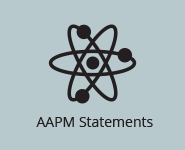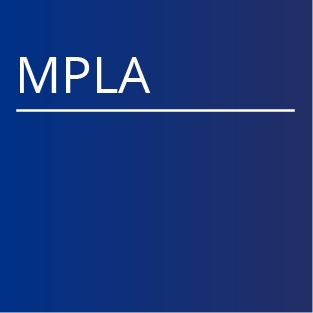| Policy number | Policy name | Policy date | Sunset date |
|---|---|---|---|
| PS 11-A | Qualifications and Practice Standards for Clinical Medical Physicists: A Guide for Government and Regulators | 11/19/2021 | 12/31/2026 |
Section |
|||
| Policy source | |||
| November 19 - 20, 2021 Board of Directors Meeting | |||
| Policy text | |||
|
AAPM strongly supports laws and regulations that authorize only Qualified Medical Physicists (QMP)1 to practice clinical medical physics2. Clinical medical physicists are responsible for ensuring the safe and effective delivery of ionizing and nonionizing radiation to achieve a diagnostic or therapeutic result as prescribed in patient care. Involvement of a QMP in clinical practice allows the beneficial use of radiation in medicine, improving quality and minimizing the risk of harm to patients, medical personnel, and the public by optimizing use of It is in the interest of public health and safety to ensure that individuals entrusted with these responsibilities meet established standards of education, training, and professional practice. AAPM supports and endorses programs such as licensure and registration which: define the authorized scope of practice of clinical medical physics; require medical physicists to hold and maintain certification from an appropriate board, engage in appropriate continuing education, and adhere to established standards of ethics and professionalism; and provide due process for revocation of the license or registration. AAPM provides definitions for medical physics subspecialties and appropriate board certifications1. Scope of practice is defined in AAPM practice guidelines2. Medical physicists must be required to obtain continuing education that satisfies American College of Radiology practice parameters3. The AAPM Code of Ethics provides recommended ethical standards for medical physicists4. To provide for due process, AAPM recommends that the body responsible for licensing or registering medical physicists organize an oversight or advisory committee of licensed or registered AAPM also encourages government and regulators to consult such committees when updating and maintaining their programs. The training process to become a QMP requires trainees to obtain supervised work experience in clinical medical physics. AAPM recommends that limited licenses or limited registrations be made available to individuals in training. These limited licenses or limited registrations must require supervision by a QMP in accordance with AAPM practice guidelines5. If limited licenses or limited registrations are available to other individuals who assist the QMP, but are not in training to become a QMP such as medical physicist assistants, these individuals must be supervised by a QMP in accordance with AAPM practice guidelines6. All work must be performed in accordance with the scope of practice2, which requires that certain activities can only be performed by a QMP. AAPM's position supports and complements those of other national medical, radiological, and regulatory professional organizations. The American College of Radiology "strongly supports the concept of state licensure or equivalent rulemaking that recognizes board certification for medical"7. The American Medical Association has adopted the policy principle that "health profession occupations should be licensed if the unregulated practice of that profession or occupation would pose a risk to the life, health or safety of the "8 The Conference of Radiation Control Program Directors supports the best practice of granting licensure or registration only to board-certified medical physicists9. References:
|
|||
| Policy version history | ||||
| Policy number | Policy name | Policy date | Sunset date | Active? |
|---|---|---|---|---|
| PP 2-A | Position Paper on Licensure for Medical Physicists | 11/1/1992 | 11/28/2000 | Inactive |
| PP 2-B | Position Paper on Licensure for Medical Physicists | 11/29/2000 | 12/2/2003 | Inactive |
| PP 2-C | Position Paper on Licensure for Medical Physicists | 12/3/2003 | 7/30/2008 | Inactive |
| PP 2-D | Licensure and The Medical Physicist's Role in the Practice of Medicine - A Guide for Administrators and Regulators | 7/31/2008 | 12/31/2021 | Inactive |
| PP 2-E | Qualifications and Practice Standards for Clinical Medical Physicists: A Guide for Government and Regulators | 11/19/2021 | 12/31/2026 | Inactive |
| PS 11-A | Qualifications and Practice Standards for Clinical Medical Physicists: A Guide for Government and Regulators | 11/19/2021 | 12/31/2026 | Active |



















